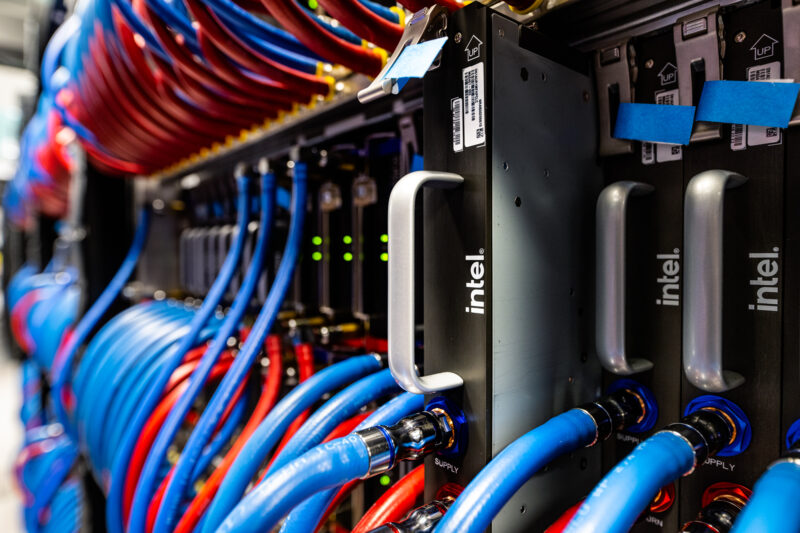Intel, in collaboration with Argonne National Laboratory and Hewlett Packard Enterprise (HPE), has revealed that its Aurora supercomputer has exceeded the exascale computing threshold reaching speeds of 1.012 exaflops to become the fastest AI-focused system.
“The Aurora supercomputer surpassing exascale will allow it to pave the road to tomorrow’s discoveries,” said Ogi Brkic, Intel’s VP and GM of Data Centre AI Solutions. “From understanding climate patterns to unravelling the mysteries of the universe, supercomputers serve as a compass guiding us toward solving truly difficult scientific challenges that may improve humanity.”
Aurora has not only excelled in speed but also in innovation and utility. Designed from the outset as an AI-centric supercomputer, Aurora enables researchers to leverage generative AI models, significantly accelerating scientific discovery.
Groundbreaking work has already been achieved using Aurora, including mapping the 80 billion neurons of the human brain, enhancing high-energy particle physics with deep learning, and accelerating drug design and discovery through machine learning.
At the core of Aurora lies the Intel Data Center GPU Max Series, built on the innovative Intel Xe GPU architecture, optimised for both AI and HPC tasks. This technological foundation enables parallel processing capabilities, crucial for handling complex neural network AI computations.
Details shared about the supercomputer highlight its grand scale, consisting of 166 racks, 10,624 compute blades, 21,248 Intel Xeon CPU Max Series processors, and 63,744 Intel Data Center GPU Max Series units, making it the largest GPU cluster worldwide.
Alongside the hardware, Intel’s suite of software tools – including the Intel® oneAPI DPC++/C++ Compiler and an array of performance libraries – boost developer flexibility and system scalability.
Intel is also expanding its Tiber Developer Cloud, incorporating new state-of-the-art hardware and enhanced service capabilities to support the evaluation, innovation, and optimisation of AI models and workloads on a large scale.
Looking forward, the deployment of new supercomputers integrated with Intel technologies is expected to transform various scientific fields. Systems like CMCC’s Cassandra will advance climate change modelling, while ENEA’s CRESCO 8 supports breakthroughs in fusion energy, among others, underscoring Intel’s dedication to advancing HPC and AI into new realms of discovery and innovation.
(Image Credit: Intel)
Want to learn more about AI and big data from industry leaders? Check out AI & Big Data Expo taking place in Amsterdam, California, and London. The comprehensive event is co-located with other leading events including Intelligent Automation Conference, BlockX, Digital Transformation Week, and Cyber Security & Cloud Expo.
Explore other upcoming enterprise technology events and webinars powered by TechForge here.
Source: artificialintelligence-news




